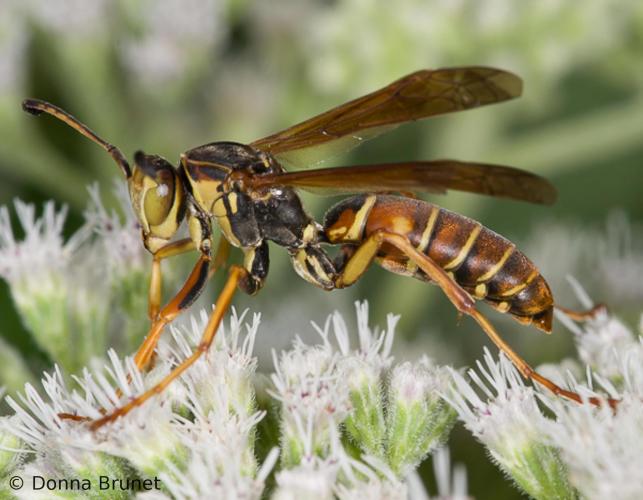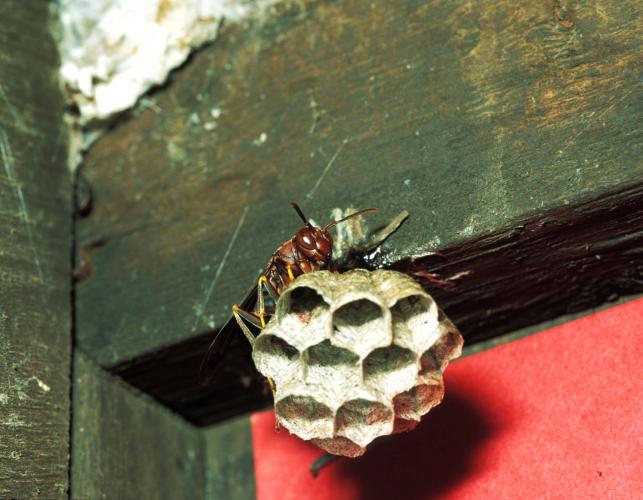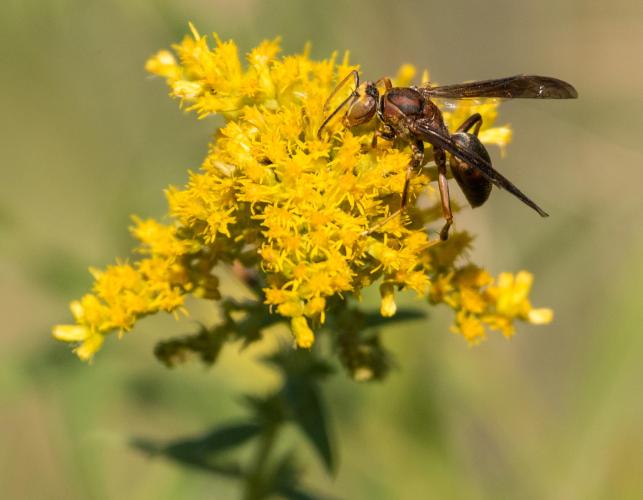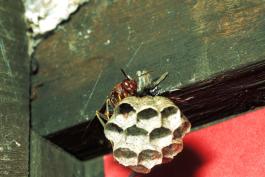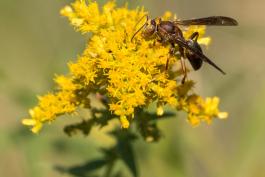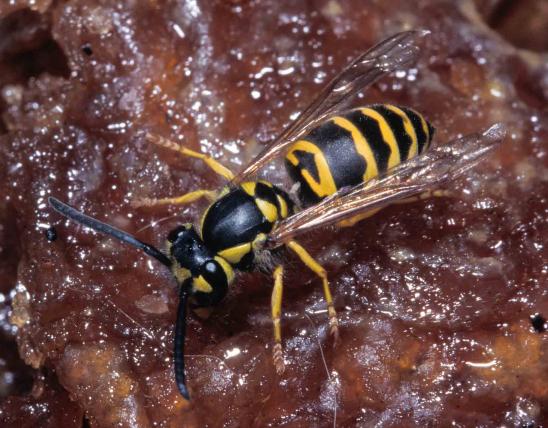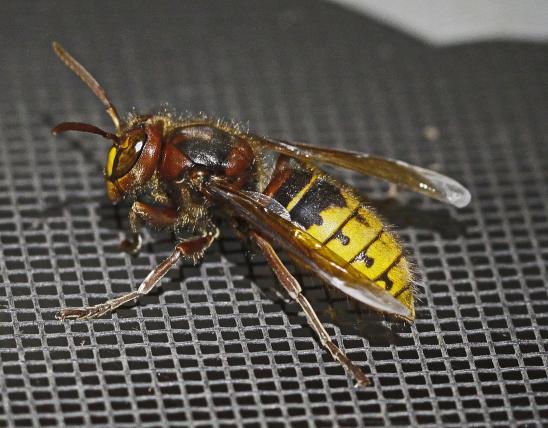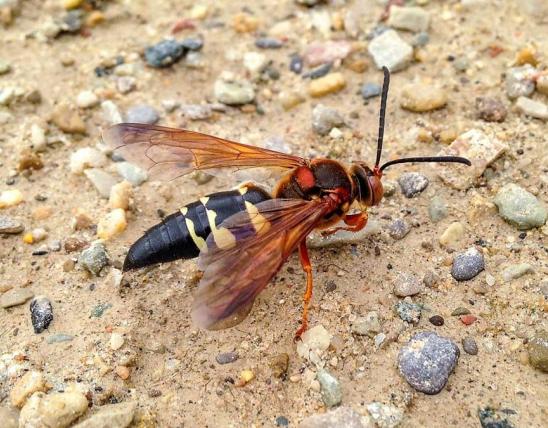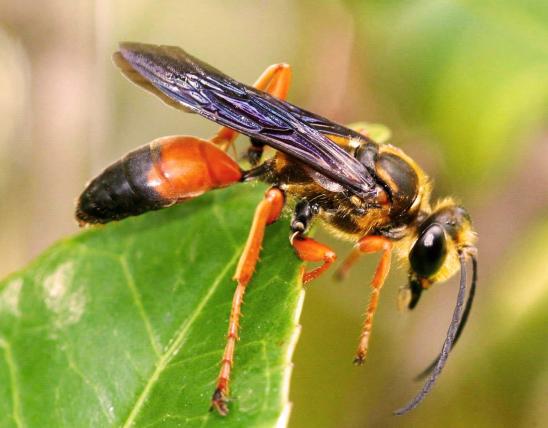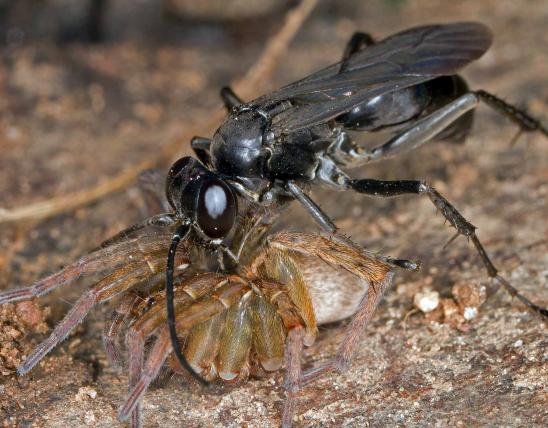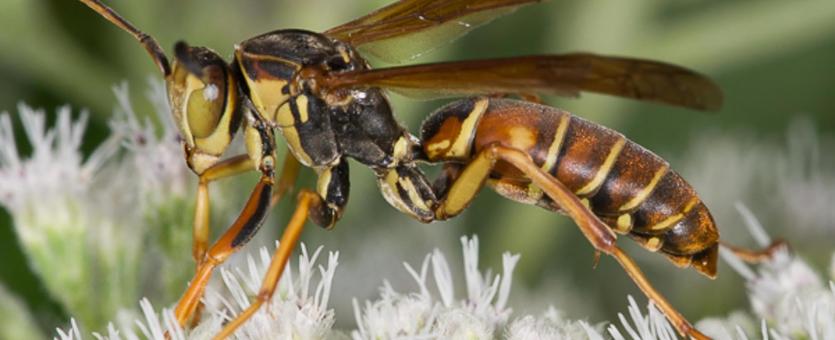
Paper wasps are the most familiar of Missouri's social wasps. Their tan, papery nests are easy to identify: a single layer of hexagonal cells, arranged side-by-side like a honeycomb, and suspended by a single stalk from some overhanging shelter (such as the eaves of a house or other building). The wasps themselves look something like skinny yellow jackets. They are black or brown, often with rusty or yellowish markings, and fly with their legs dangling.
Paper wasps are commonly seen chewing bits of wood from untreated wooden fences, park benches, and so on, which they mix with saliva and use to build their remarkable paper nests.
There are about 24 species in genus Polistes in North America north of Mexico.
Length: ½–1 inch.
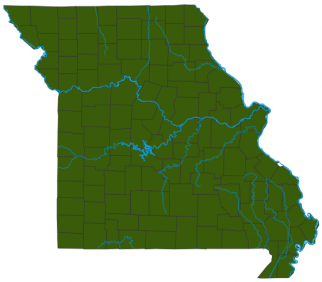
Statewide. At least eight species of Polistes wasps occur in Missouri.
Habitat and Conservation
The nests are made of paper that consists of wood fibers scraped from weathered boards or branches and mixed with saliva of the adult females. Nests are begun from scratch each spring; they are very rarely reused. The nests are a single layer of open cells that face downward and are often placed under eaves, in open buildings or in other sheltered sites. There is no outer covering for the nests.
Food
Paper wasps specialize in feeding caterpillars to their young and so are among the most beneficial insects. The adults nourish themselves by drinking nectar from flowers and juice from fruits.
Status
A late summer nest bristling with dozens of wasps can be a worrying sight. Nests are defended by workers, which makes these wasps potential stinging threats if they sense their nest is under attack. Wasps that are foraging away from the nest are usually not aggressive.
Life Cycle
Each colony is started by one or a few overwintered females, usually in April. Only one egg-laying queen is typically present, although apparently any of the workers in a colony could produce eggs.
The first offspring are usually worker females. For most of the summer, the colony is a community of mother and daughters all working together. Males and new queens are produced in mid- to late-summer.
In late fall, all individuals except for a single fertilized queen die in the freezing weather. Each fertilized queen passes the winter in a protected site such as under tree bark or inside building walls. Sometimes, a warm spell in winter will make them active again; this is why you might see a wasp flying around on a warm day in February.
Human Connections
Paper wasps are constantly hunting for caterpillars, many of which are injurious to crops, landscaping and garden plants. In this respect, paper wasps are truly beneficial to humans. As only semi-social wasps, they are relatively nonaggressive. They should not be killed indiscriminately.
Ecosystem Connections
As predators, these wasps control insects that start life as caterpillars. They play a role in pollination. Despite their stingers, wasps are preyed upon by many birds, mammals, reptiles, and even other insects, such as praying mantises. They are parasitized by a number of insects, too.
